Culture of Nepal
The culture of Nepal is rich and unique. The cultural heritage of Nepal has evolved over the centuries. This multi-dimensional heritage encompasses the diversities of Nepal’s ethnic, tribal, and social groups, and it manifests in music and dance; art and craft; folklore and folktales; languages and literature; philosophy and religion; festivals and celebration; foods and drinks. Its culture is mostly influenced by Indian, Mongolian and Tibetan culture.
Legends state that dances in this country originated in the abode of Lord Shiva — the Himalayas, where he performed the tandava
dance. This indicates that dance traditions of Nepal are very ancient
and unique. With altitudes and ethnicity, the dances of Nepal slightly
change in style as well as in the costumes.
The Dishka, a dance performed at weddings, includes intricate footwork
and arm movements. Accompanying music and musical instruments change in
tune with the themes, which revolve around topics like harvesting of
crops, marriage rites, war stories, a lonely girl’s yearning for her
love, and several other themes and stories from everyday life in the
villages. The famous Tharu stick dances, and the crazy peacock dance are
two highlights, but there are plenty of other surprises. Expect to be
invited to join in the dancing, as the evening reaches its climax.
Nepali, written in Devanagari script, is the official national language and serves as lingua franca among Nepalese ethno-linguistic groups. Extinct languages of Nepal include Kusunda, Madhesiya and Waling.
The 2001 census identified 80.6% of the population being Hindu. Buddhism
was practiced by about 11% of the population (although many people
labelled Hindu or Buddhist often practice a syncretic blend of Hinduism, Buddhism, and/or animist traditions). About 3.2% practice Islam and 3.6% of the population follows the indigenous Kirant religion. Christianity is practiced officially by less than 0.5%.
Hindu and Buddhist traditions in Nepal go back more than two millennia. In Lumbini, Buddha was born, and Pashupatinath temple, Kathmandu, is an old and famous Shiva temple of Hindus. Nepal has several other temples and Buddhist monasteries, as well as places of worship of other religious groups. Traditionally, Nepalese philosophical thoughts are ingrained with the Hindu and Buddhist philosophical ethos and traditions, which include elements of Kashmir Shaivism, Nyingma school of Tibetan Buddhism, works of Karmacharyas of Bhaktapur, and tantric traditions. Tantric traditions are deep rooted in Nepal, including the practice of animal sacrifices. Five types of animals, always male, are considered acceptable for sacrifice: water buffalo, goats, sheep, chickens, and ducks. Cows are very sacred animals and are never considered acceptable for sacrifice.
Several of the festivals of Nepal
last from one to several days. As a predominantly Hindu and Buddhist
nation, most of the Nepalese festivals are religious ones. The festivals
of Nepal have their roots in Hinduism as 82% of the population of the country is Hindu. Buddhism,
the second-largest religion of the nation which accounts for 9% of the
population, has influenced the cultural festivals of Nepal. Dashain or Dusshera
is the longest and the most important festival of Nepal. Generally
Dashain falls in late September to mid-October, right after the end of
the monsoon season. It is “a day of Victory over Demons”. The Newars celebrate the festival as Mohani. Tihar or Diwali, Holi, Saraswati Puja, Rakshabandhan, Bhai Dooj, Janmashtami, Kali Puja, Gai Jatra, Nag Panchami, Teej, Chhath, Kartik Poornima, Maghe Sankranti, Ganesh Chaturthi, Maha Shivratri and Chhechu are other widely celebrated important festivals of Nepal. New Year’s Day of the lunar calendar Nepal Sambat occurs in November. Several Jatras took place throughout the year and public holidays are declared in some regions.
Other important festivals include Buddha Purnima (the celebration of the birth of Buddha)[2] Maha Shivaratri (a festival of Lord Shiva) and during Maha Shivaratri festivities, some people consume excessive drinks and smoke charas.[3] Sherpas, mostly located at higher altitudes and in the Mount Everest region, celebrate Mani Rimdu, for the good of the world.
Most festivals include dancing and music, and a variety of special foods are consumed during festivals and on special occasions.
The Sagan ceremony is the ritualized presentation of five food items (boiled egg, smoked fish, meat, lentil cake and rice wine) to a person which is done to bring good fortune as per Tantric tradition.
Nepal Sampada Sangha (Nepal Heritage Society) has compiled an
inventory of 1,262 significant architectural and archeological sites in
Nepal outside Kathmandu Valley.[4]
Dance and music
Nepali traditional Pahadi dress used for dance
Languages
As per the 2011 census, 123 languages are spoken in Nepal. Nepal’s linguistic heritage has evolved from three major language groups: Indo-Aryan, Tibeto-Burman, and indigenous. The major languages of Nepal (percent spoken as mother tongue) are Nepali (44.6%), Maithili (11.7%), Bhojpuri(6%), Tharu (5.8%), Tamang (5.1%), Nepal Bhasa (3.2%), Magar (3%) and Bajjika (3%) Kirat–Sunuwar, Limbu, Rai, Gurung, .[1]Nepali, written in Devanagari script, is the official national language and serves as lingua franca among Nepalese ethno-linguistic groups. Extinct languages of Nepal include Kusunda, Madhesiya and Waling.
Religions and philosophy
Procession of Nepali Hindu Wedding; Groom being carried by a helper
A Buddhist monastery in southern Nepal.
Hindu and Buddhist traditions in Nepal go back more than two millennia. In Lumbini, Buddha was born, and Pashupatinath temple, Kathmandu, is an old and famous Shiva temple of Hindus. Nepal has several other temples and Buddhist monasteries, as well as places of worship of other religious groups. Traditionally, Nepalese philosophical thoughts are ingrained with the Hindu and Buddhist philosophical ethos and traditions, which include elements of Kashmir Shaivism, Nyingma school of Tibetan Buddhism, works of Karmacharyas of Bhaktapur, and tantric traditions. Tantric traditions are deep rooted in Nepal, including the practice of animal sacrifices. Five types of animals, always male, are considered acceptable for sacrifice: water buffalo, goats, sheep, chickens, and ducks. Cows are very sacred animals and are never considered acceptable for sacrifice.
Festivals and celebrations
Senior offering Dashain Tika to junior
Costumed Hindu girls of Kathmandu during festival time in Nepal
Other important festivals include Buddha Purnima (the celebration of the birth of Buddha)[2] Maha Shivaratri (a festival of Lord Shiva) and during Maha Shivaratri festivities, some people consume excessive drinks and smoke charas.[3] Sherpas, mostly located at higher altitudes and in the Mount Everest region, celebrate Mani Rimdu, for the good of the world.
Most festivals include dancing and music, and a variety of special foods are consumed during festivals and on special occasions.
The Sagan ceremony is the ritualized presentation of five food items (boiled egg, smoked fish, meat, lentil cake and rice wine) to a person which is done to bring good fortune as per Tantric tradition.
Architecture and archeology
Statue of the Bodhisattva Avalokiteshvara, gilded bronze, Nepal, 16th century CE
A 1905 painting of Nepalese woman
Sports
Kabbadi and Dandi Biyo are national games of Nepal. But now people love cricket, basketball and football as well in Nepal.[5] For more information, read Sports in NepalBasketball
Nepal has been a member of the International Federation of Basketball (FIBA) since 2000 and is FIBA Asia‘s youngest member. Yet, its national team has already established itself as a regional presence as it won two bronze medals at the SABA Championship.Gallery
-
Procession of Nepali Hindu Wedding;
-
Nepali Pahadi Hindu marriage at Narayan gadh, Chitawan
Latest and detailed information about Nepal
1.Official Name
Federal Democratic Republic of Nepal2.Population
28,170,000 (2015 census)3.Principal Languages
Nepali4.Literacy Rate
60% (2011 USCB)5.Immigrant Languages
Magahi (35,600), Odia (580), Sindhi (520)6.General References
Bista 1967, Bista 1973, Bista 1996, Burling 2003, Campbell and King 2011, Ebert 1994, Hale 1982, Hansson 1991, Hugoniot 1970, Matisoff et al 1996, Thurgood and LaPolla 2003, Toba 1976, Toba 1983, Toba 1991, Toba et al 2002, Toba et al 2005, Van Driem 2001, Van Driem 20077.Deaf Population
1920008.Recognized Nationalities
The government of Nepal officially recognizes 59 indigenous nationalities, or “Adibasi Janajatis” as they are called in Nepali. They are enumerated in the 2002 legislation that created the National Foundation for Development of Indigenous Nationalities, Act 20, Section 2a. Furthermore, the Interim Constitution of 2007 states in Article 5 that all languages spoken as mother tongues in Nepal are considered national languages.Language Counts
The number of individual languages listed for Nepal is 121. Of these, 120 are living and 1 is extinct. Of the living languages, 110 are indigenous and 10 are non-indigenous. Furthermore, 8 are institutional, 18 are developing, 30 are vigorous, 55 are in trouble, and 9 are dying.Hide Details 1 (National)
Hide Details 3 (Wider communication)Nepali[npi] 1 (National). Statutory national language (1990, Interim Constitution, 2063, Article 5(2)). 20,980,000 in Nepal, all users. L1 users: 12,300,000 (2011 census), increasing. 143,000 Achhami, 273,000 Baitadeli, 67,600 Bajhangi, 10,700 Bajureli, 490 Dadeldhuri, 3,100 Dailekhi, 5,930 Darchuleli, and 11,800,000 Nepali (2011 census). L2 users: 8,680,000 (2011 census). Total users in all countries: 24,052,600 (as L1: 15,372,600; as L2: 8,680,000).
Hide Details 4 (Educational)Hindi[hin] 3 (Wider communication). 1,307,600 in Nepal, all users. L1 users: 77,600 (2011 census), increasing. L2 users: 1,230,000 (1991 census).
Hide Details 5 (Dispersed)Avadhi[awa] 4 (Educational). Language of recognized indigenous nationality: Kushwadiya. 547,400 in Nepal, all users. L1 users: 502,000 (2011 census), increasing. L2 users: 45,400 (2011 census).Bhojpuri[bho] 4 (Educational). 1,740,000 in Nepal, all users. L1 users: 1,580,000 (2011 census), increasing. L2 users: 160,000 (2011 census).English[eng] 4 (Educational). 7,002,030 in Nepal, all users. L1 users: 2,030 (2011 census). L2 users: 7,000,000 (Crystal 2003a).Newar[new] 4 (Educational). Language of recognized indigenous nationality: Newar. 879,600 in Nepal, all users. L1 users: 847,000 (2011 census), decreasing. L2 users: 32,600 (2011 census). Many women are monolingual. Ethnic population: 1,260,000. Includes 1,245,000 Newar and 11,500 Pahari. Total users in all countries: 893,600 (as L1: 861,000; as L2: 32,600).Tamang, Eastern[taj] 4 (Educational). Language of recognized indigenous nationality: Tamang. 1,213,500 in Nepal, all users. L1 users: 1,180,000 (2001 census), increasing. Southwestern Tamang: 109,000 (1991 census). Population for all Tamang varieties: 1,350,000 (2011 census). L2 users: 33,500 (2011 census). In some remote communities, particularly women, children and elderly people are monolingual. Ethnic population: 1,290,000 (2001 census). Total users in all countries: 1,231,000 (as L1: 1,197,500; as L2: 33,500).Tibetan[bod] 4 (Educational). Spoken as a trade language among Bodish groups in Nepal. 4,450 (2011 census), increasing.
Hide Details 5 (Developing)Bengali[ben] 5 (Dispersed). 23,980 in Nepal, all users. L1 users: 21,100 (2011 census), increasing. L2 users: 2,880 (2011 census).Maithili[mai] 5 (Dispersed). 4,085,000 in Nepal, all users. L1 users: 3,890,000 (2011 census), increasing. 793,000 Bajjika, 3,090,000 Maithili (2011 census). L2 users: 195,000 (2011 census).Santhali[sat] 5 (Dispersed). Language of recognized indigenous nationality: Satar (Santhal). 50,880 in Nepal, all users. L1 users: 49,900 (2011 census), increasing. L2 users: 980 (2011 census). Very few monolinguals. Ethnic population: 51,700 (2011 census).Urdu[urd] 5 (Dispersed). 737,800 in Nepal, all users. L1 users: 692,000 (2011 census). L2 users: 45,800 (2011 census).
Hide Details 6a (Vigorous)Dolpo[dre] 5 (Developing). Language of recognized indigenous nationality: Dolpo. 8,000 (2010 K. Kopp). Ethnic population: 8,000 (2010 K. Kopp).Kham, Western Parbate[kjl] 5 (Developing). 24,500 (2003 SIL), increasing. 27,100 all Kham languages in Nepal (2011 census).Lhomi[lhm] 5 (Developing). Language of recognized indigenous nationality: Lhomi (Shingsawa). 7,000 (2014 SIL), increasing. Ethnic population: 15,000. Total users in all countries: 9,320.Limbu[lif] 5 (Developing). Language of recognized indigenous nationality: Limbu. 366,200 in Nepal, all users. L1 users: 344,000 (2011 census), increasing. L2 users: 22,200 (2011 census). Relatively few monolinguals. Total users in all countries: 403,500 (as L1: 381,300; as L2: 22,200).Marwari[rwr] 5 (Developing). 23,530 in Nepal, all users. L1 users: 22,600 (2001 census). L2 users: 930 (1991 census). Ethnic population: 51,400 (2011 census).Mundari[unr] 5 (Developing). Language of recognized indigenous nationality: Jhangad. Could be a separate language. 7,780 (2006 IMB).Nepalese Sign Language[nsp] 5 (Developing). 20,000 (2014 NDFN). Approximately 20,000 deaf signers out of 300,000 total deaf (2014 NDFN).Rajbanshi[rjs] 5 (Developing). Language of recognized indigenous nationality: Rajbanshi (Koch), Tajpuriya, Gangai. 168,300, all users. L1 users: 147,000 (2011 census), increasing. 2,080 Koche, 122,000 Rajbanshi, 18,800 Tajpuriya, 3,610 Gangai. L2 users: 21,300 (2011 census). Ethnic population: 173,000 (2011 census).Sherpa[xsr] 5 (Developing). Language of recognized indigenous nationality: Sherpa. 153,180 in Nepal, all users. L1 users: 145,000 (2011 census), decreasing. L2 users: 8,180 (2011 census). A few elderly monolinguals in remote villages (UNESCO). Ethnic population: 113,000 (2011 census). Total users in all countries: 172,280 (as L1: 164,100; as L2: 8,180).Tharu, Dangaura[thl] 5 (Developing). Language of recognized indigenous nationality: Tharu. 500,000 (2003), increasing. Population for all Tharu varieties: 1,530,000 (2011 census). 28,500 monolinguals. Total users in all countries: 674,000.Tharu, Madhya Ksetriya[the] 5 (Developing). Language of recognized indigenous nationality: Tharu. 285,000 (2001 census), increasing. Population for all Tharu varieties: 1,530,000 (2011 census).Tharu, Rana[thr] 5 (Developing). Language of recognized indigenous nationality: Tharu. 336,000 (2006), increasing. Population for all Tharu varieties: 1,530,000 (2011 census). Total users in all countries: 486,000.Thulung[tdh] 5 (Developing). Language of recognized indigenous nationality: Rai. 22,300 in Nepal, all users. L1 users: 20,700 (2011 census). Thulung communities also in Bhojpur and Sankhuwasabha districts, scattered in Udayapur, Morang, Panchthar, and Ilam districts. Migrants may not speak Thulung as L1. L2 users: 1,600 (2011 census). A few elderly monolinguals. Total users in all countries: 22,300 (as L1: 20,700; as L2: 1,600).Wambule[wme] 5 (Developing). Language of recognized indigenous nationality: Rai. 13,500 (2011 census). A few elderly monolinguals.
Hide Details 6b (Threatened)Bahing[bhj] 6a (Vigorous). Language of recognized indigenous nationality: Rai. 15,250, all users. L1 users: 11,700 (2011 census). L2 users: 3,550 (2011 census).Dotyali[dty] 6a (Vigorous). 788,000 (2011 census).Ghale, Southern[ghe] 6a (Vigorous). 18,000 (2016 SIL).Humla[hut] 6a (Vigorous). 5,000 (2014 SIL). 36% of the Limi dialect are monolingual. Ethnic population: 5,000 (2014 SIL).Hyolmo[scp] 6a (Vigorous). Language of recognized indigenous nationality: Hyolmo. 10,200 (2011 census). Very few monolinguals.Jhankot Sign Language[jhs] 6a (Vigorous).Jumli[jml] 6a (Vigorous). 40,000 (2001 SIL).Kaike[kzq] 6a (Vigorous). 2,000 (2011 A. Regmi), decreasing. No monolinguals. Ethnic population: 2,000 (2011 A. Regmi).Khaling[klr] 6a (Vigorous). Language of recognized indigenous nationality: Rai. 14,500 (2011 census), decreasing. No monolinguals. Ethnic population: 20,000.Kham, Gamale[kgj] 6a (Vigorous). 13,100 (2000), increasing. 27,100 all Kham languages in Nepal (2011 census).Kisan[sck] 6a (Vigorous). Language of recognized indigenous nationality: Kisan. 1,180 (2011 census).Koi[kkt] 6a (Vigorous). Language of recognized indigenous nationality: Rai. 1,470, all users. L1 users: 1,270 (2011 census). L2 users: 200 (2011 census).Kuke[ght] 6a (Vigorous). 1,300 (2016 SIL).Kyirong[kgy] 6a (Vigorous). 500 (2013 M. Hedlin).Lhowa[loy] 6a (Vigorous). Language of recognized indigenous nationality: Bahragaunle, Lhopa. 7,500 (2011). 5,000 Upper Mustang and 2,500 Baragaunle.Mugom[muk] 6a (Vigorous). Language of recognized indigenous nationality: Mugali. 6,500 (2006 SIL). 1,630 monolinguals (2002 UNESCO). Ethnic population: 6,500. Total users in all countries: 7,000.Naaba[nao] 6a (Vigorous). 770 (2006 IMB).Nar Phu[npa] 6a (Vigorous). 600 (2011 K. Hildebrandt). 200 Phu speakers, 400 Nar speakers.Nubri[kte] 6a (Vigorous). Language of recognized indigenous nationality: Larke. 2,000 (2001 census). 500 monolinguals.Raute[rau] 6a (Vigorous). Language of recognized indigenous nationality: Raute. 460 (2011 census), decreasing. All nomadic Raute are monolingual.Seke[skj] 6a (Vigorous). Language of recognized indigenous nationality: Tangbe. 700 (2002 SIL).Syuba[syw] 6a (Vigorous). 1,500 (2012 SIL). Very few monolinguals.Tamang, Eastern Gorkha[tge] 6a (Vigorous). Language of recognized indigenous nationality: Tamang. 3,980 (2000). Population for all Tamang varieties: 1,350,000 (2011 census).Tamang, Northwestern[tmk] 6a (Vigorous). Language of recognized indigenous nationality: Tamang. 67,200 (2011 census), increasing. Population for all Tamang varieties: 1,350,000 (2011 census).Tamang, Western[tdg] 6a (Vigorous). Language of recognized indigenous nationality: Tamang. 356,500, all users. L1 users: 323,000 (2000), increasing. Population for all Tamang varieties: 1,350,000 (2011 census). L2 users: 33,500 (2011 census). Mostly monolingual below school age or over 60 years of age.Tharu, Kathariya[tkt] 6a (Vigorous). Language of recognized indigenous nationality: Tharu. 106,000 (2006). Population for all Tharu varieties: 1,530,000 (2011 census).Tharu, Madhya-Purbiya[thq] 6a (Vigorous). Language of recognized indigenous nationality: Tharu, Dhanuk. 258,000 (2003), increasing. Population for all Tharu varieties: 1,530,000 (2011 census). Mostly illiterate older women are monolingual.Thudam[thw] 6a (Vigorous). Language of recognized indigenous nationality: Thudam. 1,800 (2000).Tichurong[tcn] 6a (Vigorous). 2,420 (2000).Tsum[ttz] 6a (Vigorous). Language of recognized indigenous nationality: Siyar. 4,790 (2000).
Hide Details 7 (Shifting)Angika[anp] 6b (Threatened). 20,330 in Nepal, all users. L1 users: 18,600 (2011 census), decreasing. L2 users: 1,730 (2011 census).Athpariya[aph] 6b (Threatened). Language of recognized indigenous nationality: Rai. 5,530 (2011 census), decreasing. Ethnic population: 5,980 (2011 census).Bantawa[bap] 6b (Threatened). Language of recognized indigenous nationality: Rai. Some varieties are used as traditional lingua franca among Rai minorities in eastern Nepal, Sikkim, India, and Bhutan, and as L1 among Rai of other origin. (Bradley 1996). 161,500 in Nepal, all users. L1 users: 133,000 (2011 census). L2 users: 28,500 (2011 census). 6,000 monolinguals. Total users in all countries: 195,100 (as L1: 166,600; as L2: 28,500).Belhariya[byw] 6b (Threatened). Language of recognized indigenous nationality: Rai. 600 (2011 census), decreasing. Ethnic population: 5,980 (2011 census). Including Athpariya and Belhariya speakers.Bote[bmj] 6b (Threatened). Language of recognized indigenous nationality: Bote. 8,770 (2011 census), decreasing. No monolinguals (2002 UNESCO). Ethnic population: 10,400 (2011 census).Byangsi[bee] 6b (Threatened). Language of recognized indigenous nationality: Byasi. 550 in Nepal, all users. L1 users: 480 (2011 census), decreasing. L2 users: 70 (2011 census). No monolinguals (2002 UNESCO). Ethnic population: 3,900 (2011 census).Chamling[rab] 6b (Threatened). Language of recognized indigenous nationality: Rai. 83,200 in Nepal, all users. L1 users: 76,800 (2011 census), decreasing. L2 users: 6,400 (2011 census). Very few monolinguals. Total users in all countries: 83,200 (as L1: 76,800; as L2: 6,400).Chantyal[chx] 6b (Threatened). Language of recognized indigenous nationality: Chhantyal. 4,280 (2011 census), decreasing. No monolinguals. Ethnic population: 11,800 (2011 census).Chepang[cdm] 6b (Threatened). Language of recognized indigenous nationality: Chepang. 48,500 (2011 census), decreasing. No monolinguals. Ethnic population: 68,400 (2011 census).Chhintang[ctn] 6b (Threatened). Language of recognized indigenous nationality: Rai. 3,710 (2011 census), decreasing. No monolinguals. Ethnic population: 5,000.Darai[dry] 6b (Threatened). Language of recognized indigenous nationality: Darai. 11,700 (2011 census), decreasing. Very few monolinguals. Ethnic population: 16,800 (2011 census).Dhimal[dhi] 6b (Threatened). Language of recognized indigenous nationality: Dhimal. 20,430 in Nepal, all users. L1 users: 19,300 (2011 census), decreasing. L2 users: 1,130 (2011 census). Ethnic population: 26,300 (2011 census). Total users in all countries: 20,880 (as L1: 19,750; as L2: 1,130).Dungmali[raa] 6b (Threatened). Language of recognized indigenous nationality: Rai. 6,260 (2011 census), decreasing. 150 monolinguals. Ethnic population: 10,000.Ghale, Northern[ghh] 6b (Threatened). 4,440 (2016 SIL). 400 monolinguals. Ethnic population: 22,900 (2011 census). All Ghale populations.Gurung[gvr] 6b (Threatened). Language of recognized indigenous nationality: Gurung. 348,800 in Nepal, all users. L1 users: 326,000 (2011 census), increasing. L2 users: 22,800 (2011 census). 12,000 monolinguals. Ethnic population: 523,000 (2011 census). Total users in all countries: 381,800 (as L1: 359,000; as L2: 22,800).Jerung[jee] 6b (Threatened). Language of recognized indigenous nationality: Rai. 5,380, all users. L1 users: 1,760 (2011 census). L2 users: 3,620 (2011 census).Jirel[jul] 6b (Threatened). Language of recognized indigenous nationality: Jirel. 4,830 (2011 census), decreasing.Jumla Sign Language[jus] 6b (Threatened). 8 (2005 INF). 8 monolinguals.Kewat[kyv] 6b (Threatened). 22,000 (2002). Ethnic population: 154,000 (2011 census).Kham, Eastern Parbate[kif] 6b (Threatened). 7,500 (2003 SIL), decreasing. 27,100 all Kham languages in Nepal (2011 census). No adult monolinguals.Kham, Sheshi[kip] 6b (Threatened). 20,000 (2003 SIL), decreasing. 27,100 all Kham languages in Nepal (2011 census).Kharia[khr] 6b (Threatened). Language of recognized indigenous nationality: Bankariya. 240 (2011 census).Kulung[kle] 6b (Threatened). Language of recognized indigenous nationality: Rai. 33,200 (2011 census).Kurux, Nepali[kxl] 6b (Threatened). 33,700 (2011 census), decreasing. No monolinguals (2002 UNESCO). Ethnic population: 41,800. Dhagar (Jhagar).Lohorung[lbr] 6b (Threatened). Language of recognized indigenous nationality: Rai. 3,720 (2011 census).Magar, Eastern[mgp] 6b (Threatened). Language of recognized indigenous nationality: Magar. 462,000 (2001 census), decreasing. 789,000 all Magar in Nepal (2011 census). The identification of Magars is complicated by the fact that a number of other ethnic groups (Chantyal, Kham, Kaike, Kusunda, Raute, Raji) have claimed to be Magars to outsiders. Isolated enclaves of monolinguals are found in Nawalparasi and southern Tanahu districts. Ethnic population: 1,890,000 (2001 census). Includes Eastern and Western Magar. Total users in all countries: 533,700.Magar, Western[mrd] 6b (Threatened). Language of recognized indigenous nationality: Magar. 308,000 (2001 census), decreasing. 789,000 all Magar in Nepal (2011 census). Census statistics likely include non-ethnic Magars and many that do not speak Magar. Ethnic population: 1,890,000 (2011 census). Includes Eastern and Western Magar.Majhi[mjz] 6b (Threatened). Language of recognized indigenous nationality: Majhi. 24,400 (2011 census), decreasing. Ethnic population: 72,600. Total users in all countries: 44,800.Meche[brx] 6b (Threatened). Language of recognized indigenous nationality: Meche (Bodo). 4,380 (2011 census). No monolinguals. Ethnic population: 4,870 (2011 census).Mewahang, Eastern[emg] 6b (Threatened). Language of recognized indigenous nationality: Rai. 4,650 all Mewahang (2011 census). Almost no monolinguals. Ethnic population: 1,580 (2011 census).Mewahang, Western[raf] 6b (Threatened). Language of recognized indigenous nationality: Rai. 4,650 all Mewahang (2011 census). Few monolinguals. Ethnic population: 570 (2011 census).Musasa[smm] 6b (Threatened). 50,000 (2003). 20,000 Musasa and 30,000 Musasa Bantar. Ethnic population: 234,000 (2011 census).Nyeshangte[nmm] 6b (Threatened). 390 (2011 census), decreasing. Ethnic population: 5,000 (2007 K. Hildebrandt).Puma[pum] 6b (Threatened). Language of recognized indigenous nationality: Rai. 6,690 (2011 census), decreasing.Raji[rji] 6b (Threatened). Language of recognized indigenous nationality: Rajhi. 3,760 (2011 census), decreasing. Ethnic population: 4,000.Sampang[rav] 6b (Threatened). Language of recognized indigenous nationality: Rai. 20,300, all users. L1 users: 18,300 (2011 census), decreasing. Phali dialect spoken by a few elderly speakers. L2 users: 2,000 (2011 census). No monolinguals.Sunwar[suz] 6b (Threatened). Language of recognized indigenous nationality: Surel. Sunuwar. 39,760, all users. L1 users: 38,200 (2011 census). 37,900 Sunwar, 290 Surel (2011 census). L2 users: 1,560 (2011 census). Very few monolinguals. Ethnic population: 55,700 (2011 census).Thangmi[thf] 6b (Threatened). Language of recognized indigenous nationality: Thami. 23,580 in Nepal, all users. L1 users: 23,200 (2011 census), decreasing. L2 users: 380 (2011 census). 100 monolinguals (2002 UNESCO). Ethnic population: 35,000 (Turin 2007). 28,700 (2011 census). Total users in all countries: 24,380 (as L1: 24,000; as L2: 380).Walungge[ola] 6b (Threatened). Language of recognized indigenous nationality: Walung, Topkegola. 1,170 (2011 census), decreasing. Mostly in original area. High language loss among those who have left the language area. Ethnic population: 1,150 (2011 census).Yakkha[ybh] 6b (Threatened). Language of recognized indigenous nationality: Yakkha. 21,090 in Nepal, all users. L1 users: 19,600 (2011 census), decreasing. L2 users: 1,490 (2011 census). Very few monolinguals. Ethnic population: 24,300 (2011 census). Total users in all countries: 21,900 (as L1: 20,410; as L2: 1,490).Yakkha, Chhathare[luu] 6b (Threatened). 1,200 (2000).Yamphu[ybi] 6b (Threatened). Language of recognized indigenous nationality: Rai. 9,210 (2011 census), decreasing. Ethnic population: 6,810 (2011 census).Yamphu, Southern[lrr] 6b (Threatened). Language of recognized indigenous nationality: Rai. 2,500 (2011 SIL), decreasing.
Hide Details 8a (Moribund)Bhujel[byh] 7 (Shifting). Language of recognized indigenous nationality: Bhujel. 23,290, all users. L1 users: 21,700 (2011 census), decreasing. L2 users: 1,590 (2011 census). No monolinguals. Ethnic population: 7,200 (Regmi 2007).Chhulung[cur] 7 (Shifting). Language of recognized indigenous nationality: Rai. 2,050 (2011 census), decreasing. L1 speakers dwindling (Van Driem 2007).Danuwar[dhw] 7 (Shifting). Language of recognized indigenous nationality: Danuwar. 48,650, all users. L1 users: 45,800 (2011 census), decreasing. L2 users: 2,850 (2011 census). No monolinguals (Toba et al 2005). Ethnic population: 84,100 (2011 census).Dumi[dus] 7 (Shifting). Language of recognized indigenous nationality: Rai. 7,640 (2011 census), decreasing. No monolinguals. Ethnic population: 12,000.Kumal[kra] 7 (Shifting). Language of recognized indigenous nationality: Kumal. 13,610, all users. L1 users: 12,200 (2011 census), decreasing. L2 users: 1,410 (2011 census). No monolinguals. Ethnic population: 121,000 (2011 census).Lapcha[lep] 7 (Shifting). Language of recognized indigenous nationality: Lepcha. 7,500 (2011 census), decreasing. No monolinguals. Ethnic population: 3,660.Mugali[lmh] 7 (Shifting). Language of recognized indigenous nationality: Rai. 1,500 (2010 I. Rai), decreasing. Very few monolinguals.Nachering[ncd] 7 (Shifting). Language of recognized indigenous nationality: Rai. 10,000 (2011 census), decreasing.Phangduwali[phw] 7 (Shifting). Language of recognized indigenous nationality: Rai. 290 (2011 census).Sonha[soi] 7 (Shifting). 580 (2011 census), decreasing. No monolinguals.Thakali[ths] 7 (Shifting). Language of recognized indigenous nationality: Thakali, Chhairotan, Marphali Thakali, Tieengaule Thakali. 6,000, all users. L1 users: 5,240 (2011 census), decreasing. L2 users: 760 (2011 census). Ethnic population: 13,200 (2011 census).Wayu[vay] 7 (Shifting). Language of recognized indigenous nationality: Hayu. 1,520 (2011 census), decreasing. No monolinguals. Ethnic population: 2,930 (2011 census).
Hide Details 8b (Nearly extinct)Chukwa[cuw] 8a (Moribund). Language of recognized indigenous nationality: Rai. 100 (2011 SIL), decreasing. Only 5 fluent speakers (2011).Tilung[tij] 8a (Moribund). Language of recognized indigenous nationality: Rai. 20 (2015 SIL), decreasing.
Hide Details 9 (Dormant)Baram[brd] 8b (Nearly extinct). Language of recognized indigenous nationality: Baramou. 160 (2011 census), decreasing. Ethnic population: 8,140 (2011 census).Ghandruk Sign Language[gds] 8b (Nearly extinct). 20 (2011 SIL).Kusunda[kgg] 8b (Nearly extinct). Language of recognized indigenous nationality: Kushunda. 3 (2014 M. Donohue), decreasing. 28 (2011 census). No monolinguals. Ethnic population: 270 (2011 census).Saam[raq] 8b (Nearly extinct). Language of recognized indigenous nationality: Rai. 530 (2011 census). 130 Lingkhim, 400 Saam (2011 census).
Hide Details 10 (Extinct)Dura[drq] 9 (Dormant). Language of recognized indigenous nationality: Dura. No known L1 speakers (2016 SIL). Ethnic population: 5,390 (2011 census).Sanskrit[san] 9 (Dormant). 3,000 in Nepal, all users. L1 users: No known L1 speakers. L2 users: 3,000 (2011 census).Waling[wly] 9 (Dormant). No known L1 speakers (2011).
Palpa[plp] 10 (Extinct). No known L1 speakers (2011).Photographs of heritage sites of Nepal



Nepal, Lumbini Nepal, Lumbini Nepal, Lumbini 


Nepal, Lumbini Nepal, Lumbini Nepal, Pashupatinath Temple 


Nepal, Pashupatinath Temple Nepal, Pashupatinath Temple Nepal, Durbar Square, Bakhtapur 


Nepal, Durbar Square, Bakhtapur Nepal, Bhupatindra Malla Palace, Bakhtapur Nepal, Bhupatindra Malla Palace, Bakhtapur 


Nepal, Boudhnath Stupa Nepal, Swayambhunath Stupa Nepal, Swayambhunath Stupa 


Nepal, Swayambhunath Stupa Nepal, Swayambhunath Stupa Nepal, Darbar Square, Patan
Prepared by Biabh Bhattarai.
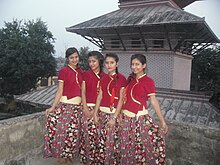
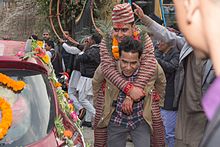
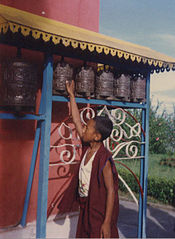
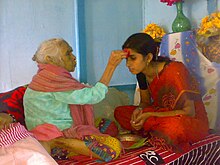

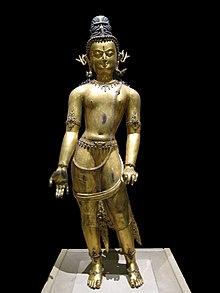





0 comments:
Post a Comment